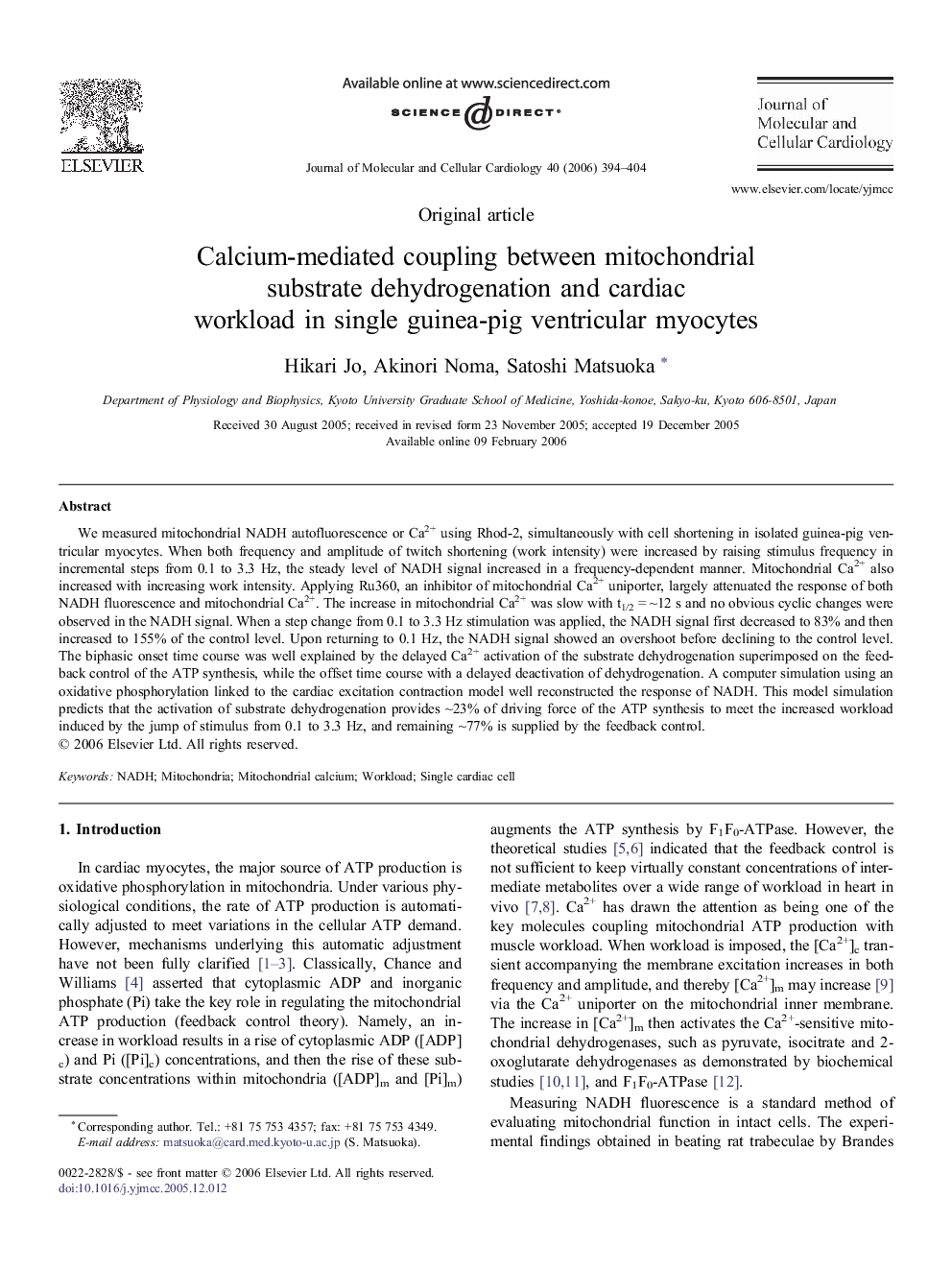| کد مقاله | کد نشریه | سال انتشار | مقاله انگلیسی | نسخه تمام متن |
|---|---|---|---|---|
| 2192540 | 1097898 | 2006 | 11 صفحه PDF | دانلود رایگان |

We measured mitochondrial NADH autofluorescence or Ca2+ using Rhod-2, simultaneously with cell shortening in isolated guinea-pig ventricular myocytes. When both frequency and amplitude of twitch shortening (work intensity) were increased by raising stimulus frequency in incremental steps from 0.1 to 3.3 Hz, the steady level of NADH signal increased in a frequency-dependent manner. Mitochondrial Ca2+ also increased with increasing work intensity. Applying Ru360, an inhibitor of mitochondrial Ca2+ uniporter, largely attenuated the response of both NADH fluorescence and mitochondrial Ca2+. The increase in mitochondrial Ca2+ was slow with t1/2 = ~12 s and no obvious cyclic changes were observed in the NADH signal. When a step change from 0.1 to 3.3 Hz stimulation was applied, the NADH signal first decreased to 83% and then increased to 155% of the control level. Upon returning to 0.1 Hz, the NADH signal showed an overshoot before declining to the control level. The biphasic onset time course was well explained by the delayed Ca2+ activation of the substrate dehydrogenation superimposed on the feedback control of the ATP synthesis, while the offset time course with a delayed deactivation of dehydrogenation. A computer simulation using an oxidative phosphorylation linked to the cardiac excitation contraction model well reconstructed the response of NADH. This model simulation predicts that the activation of substrate dehydrogenation provides ~23% of driving force of the ATP synthesis to meet the increased workload induced by the jump of stimulus from 0.1 to 3.3 Hz, and remaining ~77% is supplied by the feedback control.
Journal: Journal of Molecular and Cellular Cardiology - Volume 40, Issue 3, March 2006, Pages 394–404